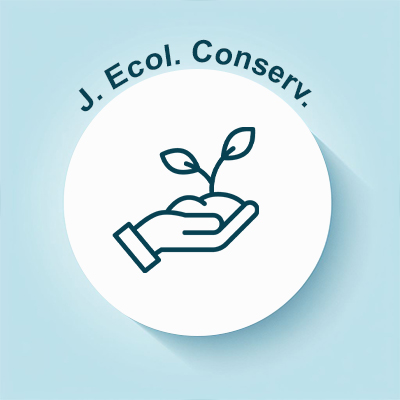
Journal of Ecology and Conservation
OPEN ACCESS
ISSN: 3048-5177

OPEN ACCESS
ISSN: 3048-5177
Sustainable ecosystems preserve their ecological functions and productivity in the long term and supply resources and services that are necessary for human survival. Sustainable ecosystem management combines economic, ecological, and social aspects to equilibrate conservation and human needs. It encompasses conservation of natural assets such as water, soil, and biodiversity, and also encouraging practices that never deplete nor harm these assets. Some examples include sustainable fisheries, forestry, and agriculture, where ecosystems are kept healthy and able to sustain future generations.
What Does "Sustainability" Mean in an Ecosystem?
A community of living things, such as plants, animals, and organisms, that cooperate to produce and move resources so that each other can exist is called an ecosystem. An ecosystem is considered sustainable if it can sustain itself without external intervention. When essential components are removed from an ecosystem, which typically occurs due to human intervention, the ecology becomes unsustainable. Resources like food and water are provided by sustainable ecosystems for both humans and their own residents. Here are a few sustainable ecosystem examples.
Wetlands
Water-covered terrain is known as a wetland, and the primary feature of wetland ecosystems is hydrophytes. Plants known as hydrophytes thrive in environments with low oxygen levels and provide nourishment for other living things. The fact that wetland ecosystems support and harbor a wide variety of animal species contributes to their sustainability. For instance, because hydrophyte plants are a major source of sustenance for moose, they can flourish in wetland environments.
Rainforests
The humid air and mild temperatures of rainforest environments are well-known. In addition to native populations, rainforests are home to more than 30 million different plant and animal species. Because their trees absorb carbon dioxide and release oxygen in exchange, rainforests are also an important source of oxygen. A wide variety of plants and animals may be found in rainforests, and it is this species diversity that makes rainforests sustainable and self-sufficient. However, the sustainability of a rainforest can be impacted by pressures like deforestation.
Desert
Deserts are regions that receive very little annual precipitation, in contrast to humid and moist rainforests. Despite being warm-blooded, many of the animal species that inhabit these environments have adapted to the dry air and intense heat. When precipitation is scarce, plants that can readily store water, like cactus, are advantageous. Mineral reserves and other vital resources are found in deserts. Borate, a salt used to make glass and some ceramics, is one example. Due to their natural production of jewels, oil, and precious metals, deserts are also popular places for mining.
Reefs of coral
Coral reefs are made up of organisms called corals. Numerous marine species depend on coral reefs for food, refuge, and breeding grounds. Zooxanthellae, a species of algae, depend on coral reefs for their good living conditions. Through the process of photosynthesis, these algae create carbohydrates that the coral can subsequently consume. In addition to providing food and even medicine, coral reefs shield coasts from erosion and storms, making them vital ecosystems.